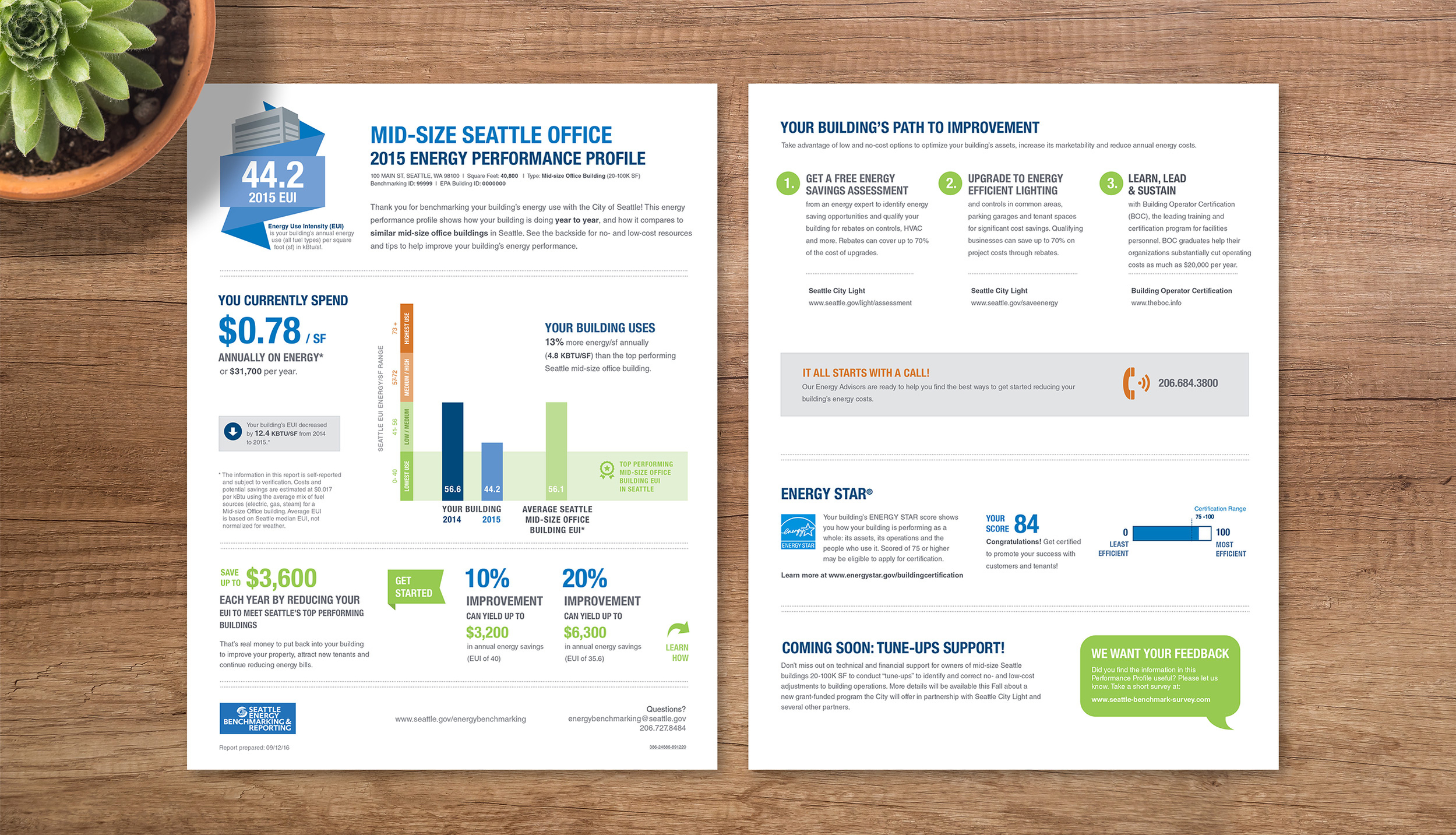Building a Better Energy Scorecard
Using targeted messaging in motivating building owners to optimize their energy performance.
The mission
The City of Seattle’s Office of Sustainability and Environment (OSE), a national leader in building energy benchmarking policy, sought to motivate building owners through the power of data. We partnered with OSE to provide each building with a Scorecard that recorded their energy use and helped them understand how it compared to previous years and similar buildings. Further, the Scorecard highlighted steps owners could take to improve their energy score — and the potential cost savings of those steps.
To provide relevant and meaningful information on the Scorecards, OSE segmented the buildings based on their size, age, use, and current energy performance. This ensured the peer comparisons would compel building owners to improve their scores. Additionally, we created a messaging strategy for each segment designed to motivate building owners in taking specific actions that were relevant to where they are in their energy efficiency journey.
Given the variance in building characteristics and energy use profiles, a one-size-fits-all messaging approach would have missed the mark.
Because developing a targeted Scorecard for every building in Seattle is no small feat, OSE needed a streamlined method for populating the Scorecards. Together, we developed a Microsoft Word template that connected to the benchmarking data, allowing OSE to populate thousands of scorecards with a click of a button.
This integrated process not only pulled benchmarking data, but also applied the targeted messaging strategy appropriate for each building. Our biggest celebration was figuring out a way to populate the bar chart!

What we did
-
Market research
-
Messaging strategy
-
Messaging frameworks
-
Copy development
-
Graphic design
-
Infographics
The results
Market testing indicated excellent response to the new Scorecard. Participants — mostly building owners — responded with impressive 38% view rates overall, including 82% in the “high performers” category. The automated Scorecard process worked well and made the targeted outreach effort manageable. We are proud of the aesthetic we created for the Scorecard, considering we had to use Microsoft Word and variable text blocks (can you say limiting!). We hope you’ll see for yourself below.